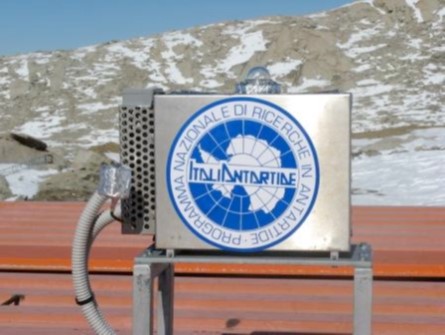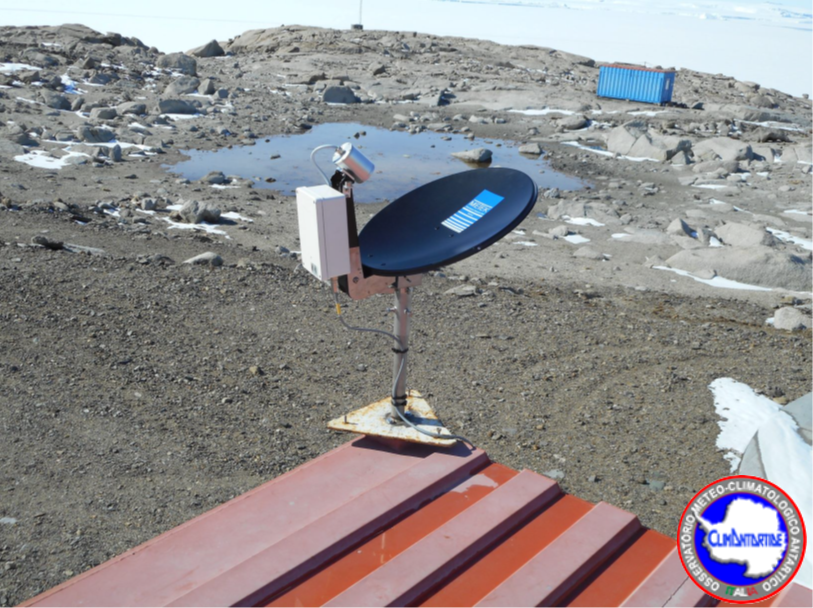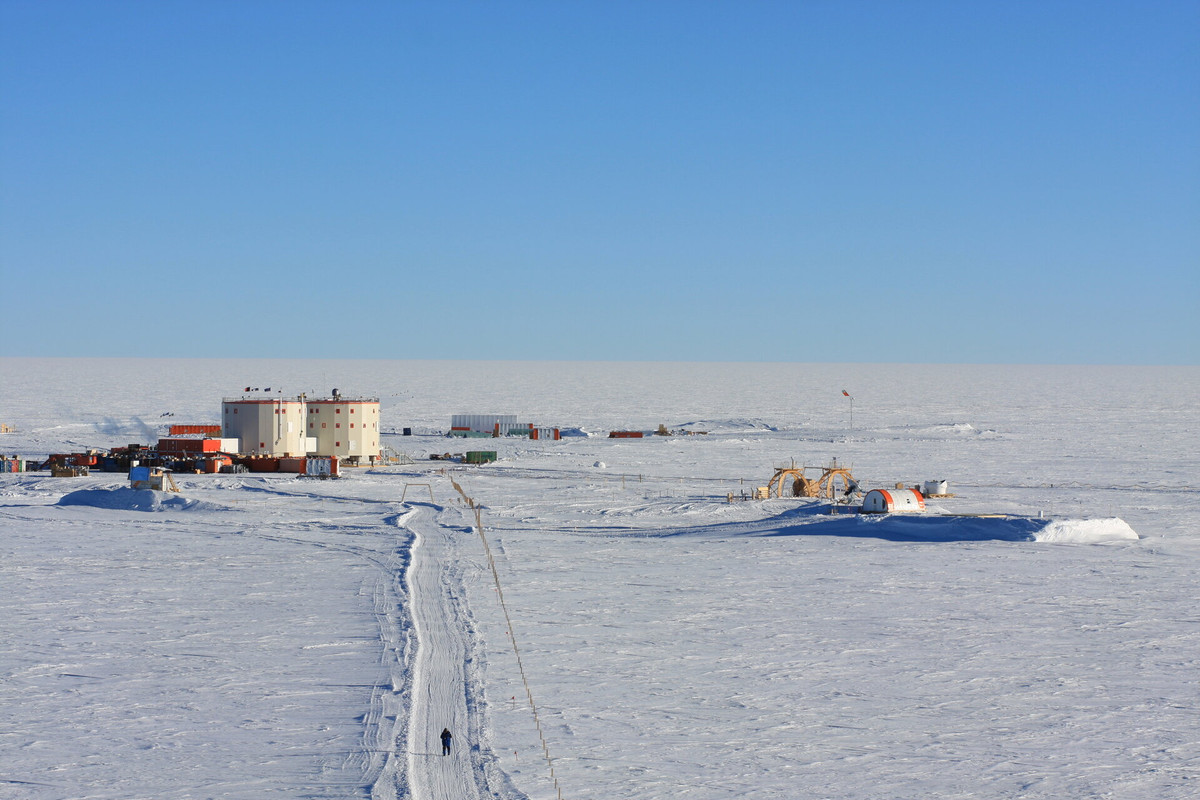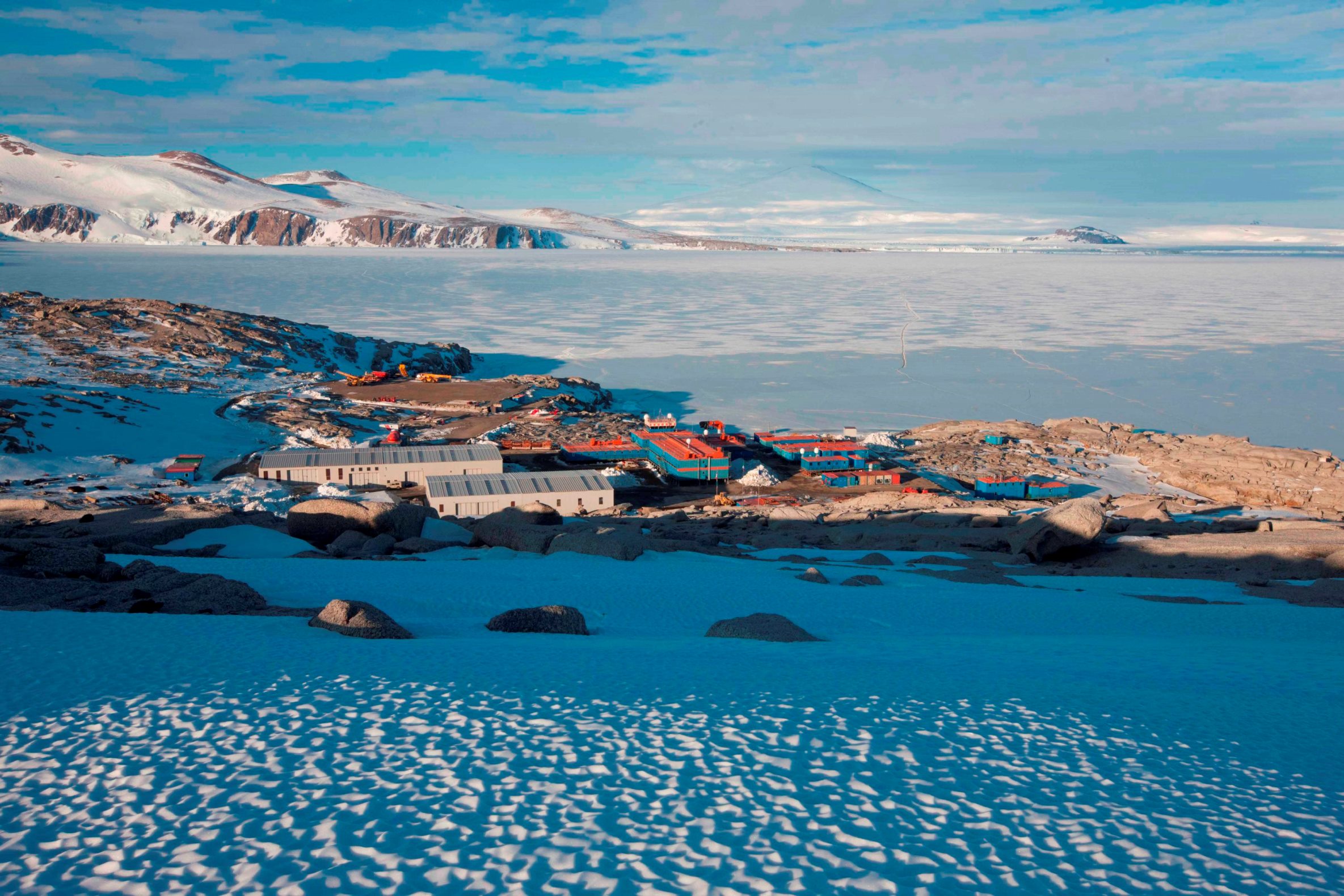ATMOSPHERE
Type of resources
Topics
INSPIRE themes
Keywords
Contact for the resource
Provided by
Formats
Representation types
Update frequencies
status
Scale
-

The UV spectral measurement at ground it’s a diffuse method to determine the stratospheric ozone content. The main objective of the project was the assembling of the UV filter radiometer (named F-RAD) for the measurements of the Sun global irradiance at the Mario Zucchelli Station (MZS), Terranova Bay, Antarctica. The main parts of the instruments are: the entrance radiation optical system, the filters selecting the wavelength of interest and the control system, hardware and software, governing all the measurement steps. The main requirements were: time resolution of one minute and spectral resolution less than 1 nm. The researchers of the project have been participated at two Antarctica campaign, the XXI campaign, 2005, and the XXV campaign, 2009. - XXI Campaign: the radiometer was tested in the Antarctica environment in order to check the reliability of the different components and the optical stability of the filters. - XXV Campaign: the radiometer F-RAD was definitively placed on the roof of one of the MZS building and connected with the Local Area Network of the base. the UV data were daily downloaded in Italy. The spectral UV data acquired with high time resolution, each wavelength was measured 1430 time per day and high spectral resolution, the filters have a FWHM of 0.5- 0.8 nm. F-RAD was placed in Antarctica in November 2009 and works properly, the different parameters are checked daily.
-

Data of the precipitation fallen during the summer months (November-December-January) on four expeditions, 2015-16, 2016-17, 2017-18, and 2018-19, in the Terra Nova Bay area, were obtained using a vertically pointing radar, disdrometer and snow gauge. The vertical pointing METEK Micro Rain Radar 2 (MRR) was installed in MZS at the end of November 2015. It records Doppler velocity spectra every 10 s at 32 range gates. The radar gate spacing was set to 100 m allowing the profiler to sound heights ranging from 100 to 3100 m above the surface. The raw K-band power spectra, collected by the MRR, were processed applying the method proposed by Maahn and Kollias (2012) to correct for noise and aliasing effects, making them suitable for snow observation. A Thies CLIMA laser disdrometer (LPM), has been operational since December 2014.The disdrometer can simultaneously count and measure the size and fall velocity of hydrometeors. A Total Rain weighing Sensor (TRwS) manufactured by MPS system was installed during the december 2018 - January 2019 campaign within the YOPP observing period. The TRwS is a total rain/snowfall weighing gauge with an orifice area of 400 cm2, a depth accuracy of 0.01 mm of w.e. and a one -minute sampling time resolution (Savina and others, 2012). The TRwS was protected by an alter shield in order to minimize wind effect over the accumulation inside the instrumentation.
-

Systematic meteorological observations on the ground and at altitude have been carried out in Concordia station since 2005. Currently, an automatic weather station (AWS Concordia) and a radiosonde system (DomeC) operate continuously all year round. In addition to the standard parameters (temperature, pressure, relative humidity, wind intensity and direction), the AWS integrates an additional sensor (sonic) for measuring the wind. AWS data are transmitted in real time via radio modem and via the Argos system for local storage and display on the intranet and base station. The meteorological data of the AWS and the radiosonde, as well as by the scientific community, are used for local forecasts and for the planning of flight. The transmission of meteorological messages on the international WMO-GTS circuit allows their assimilation into the models, contributing to the improvement of their performances. The acquired meteorological data contribute to the Basic Synoptic Network (WMO) and to the SCAR database (Met-READER). This proposal intends to continue the collection of data for the historical series, for weather-climatic monitoring and to support scientific and operational activities taking place at the base.
-

Systematic meteorological observations on the ground and at high altitudes have been carried out in the Mario Zucchelli station (MZS) and Terra Vittoria (TV) since 1987. To date, 15 automatic meteorological stations (AWS) are in operation all year round and, only in summer, a radio sound system, a celiometer for measuring the base of the clouds, a "sky camera" and a rain gauge. Some AWS, besides the standard parameters (temperature, pressure, relative humidity, wind intensity and direction) integrate sensors for radiation overall, the accumulation of snow. Most AWS transmit data in real time via radio modem or iridium to MZS during the summer, and throughout the year via the Argos satellite system. In addition to the scientific community, the data are used for local forecasts and for the planning of flight activities. The transmission of meteorological messages on the international WMO-GTS circuit allows their assimilation into the models, contributing to the improvement of their performances. The acquired data contribute to the Basic Synoptic Network (WMO) and to the SCAR database (Met-READER). This proposal intends to continue data collection for the historical series (up to 28 years of data), for weather-climatic monitoring and as support for scientific and operational activities.
-

In the frame of YOPP WMO Project, during the Special Observing Period lasting from 16th November 2018 to 15th February 2019, in Concordia and Mario Zucchelli stations daily soundings were executed regularly in DOMEC at 00:00 and 12:00 UTC, and in MSZ another sounding was done at 06:00 UTC and 18:00 UTC. The atmospheric parameters along the vertical profile (upper-air mesaurements) monitored are: height (gps position), pressure, temperature, humidity, velocity of wind, direction of the wind. The RDS (VAISALA RS92) is launched into the atmosphere coupled to a balloon inflated with helium. The sonde rises with a speed of about 2-5 m / s up to a height of between 20 and 25 km. During the ascent all the parameters are acquired. The data obtained are coded both in a digital format (BUFR) and in text format and entered into the global network (GTS) of the World Meteorological Organization (WMO).
-

The Observatory main purpose is to contribute to the monitoring of global climate change monitoring standard meteorological parameters. The automatic weather station Alessandra is located in Cape King (73° 35′ 10″ S - 166° 37′ 16″ E) at 160 m of altitude, where has been installed on the 1st February 1987. It acquired, all year round, the meteorological variables of wind velocity, wind direction, temperature, pressure, relative humidity and solar radiation.
 ENEA Antarctic Data Center
ENEA Antarctic Data Center